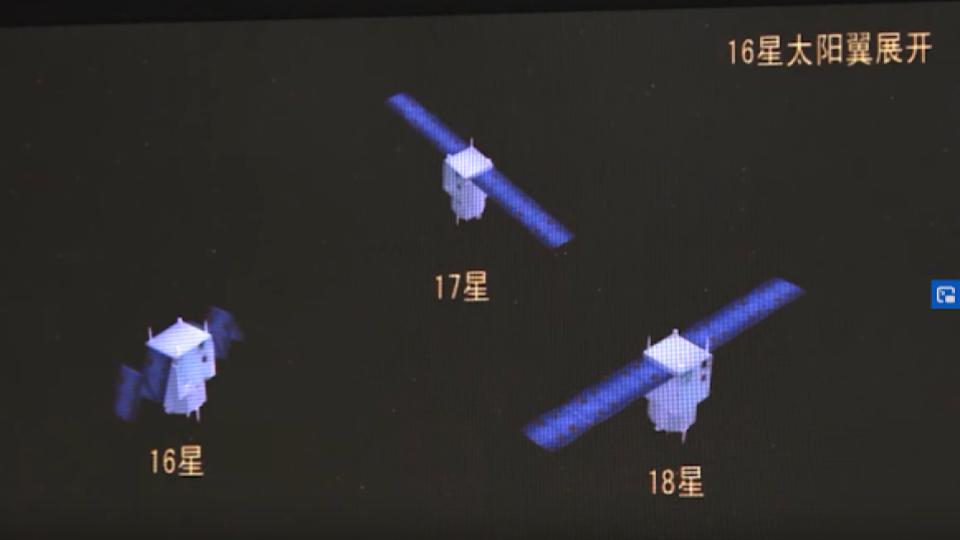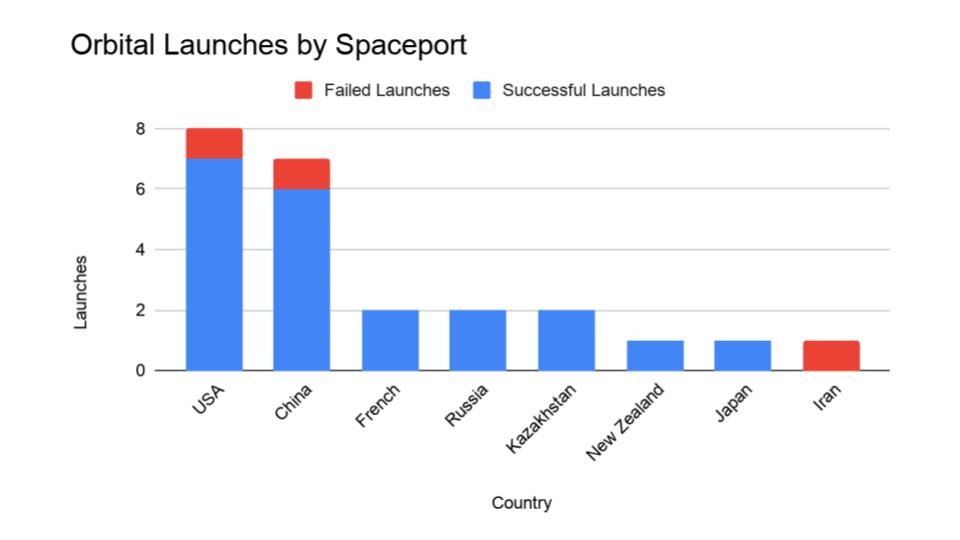
Today Gordon takes us through the collection of rocket launches and delays – Roscosmos launched a satellite constellation, China launched some military reconnaissance satellites SpaceX launched another set of Starlink satellites, and COVID-19 delays a number of launches worldwide.
Links
OneWeb launch
- Soyuz rocket successfully launches 34 more OneWeb satellites (Spaceflight Now)
- Amid bankruptcy reports, OneWeb plans launch of 34 more satellites (Spaceflight Now)
- Launch Video 45:00 – 53:30 (storytime) 1:04:00 – (launch) https://www.youtube.com/watch?v=bg3ffqkef6w
- OneWeb on YT – https://www.youtube.com/channel/UCzs-1EA5e6MRHXK8NKyqzcw/videos
- OneWeb launch / mission patch
China’s space agency launches 3 new military reconnaissance satellites
- Yaogan-30-06 | Long March 2C (EverydayAstronaut)
- China Launched Its Yaogan Weixing Mission Successfully (DualDove)
- Yaogan 30-01, 30-02, 30-03, 30-04, 30-05, 30-06 (CX 5) (Gunter’s Space Page)
- China launches new remote sensing satellites (CCTV)
- Yaogan 30-06 (3x) (RocketLaunch.Live)
COVID-19 Effects on Spaceflight
- Military officials committed to keeping Cape Canaveral open for launches (SpaceflightNow)
- 45th Space Wing: Launches to go on as scheduled SpaceX (SpaceflightNow)
- Rocket Lab postpones launch because of coronavirus pandemic (SpaceNews)
- Bigelow Aerospace lays off entire workforce (SpaceNews)
Transcript
Hello, and welcome to the Daily Space for today March 25, 2020. I am your host Gordon Dewis (aka Keeper of Maps in Discord and Twitch), filling in for Annie who just moved and is waiting for her Internet to be hooked up. Most Mondays through Fridays, our team will be here putting science in your brain.
Usually Wednesdays are for Rocket Roundup, and today is no different.
Let’s get to it, shall we?

Up first, a Soyuz 2.1b with a Fregat upper stage took off from Baikonur Cosmodrome in Kazakhstan on Saturday 21 MAR 2020 1706:58 GMT (1:06:58 p.m. EDT; 10:06:58 p.m. Baikonur time).
With the help of Roscosmos providing the facilities and the launch vehicle, Arianespace providing the commercial launch services, and Sweden’s RUAG Space providing the multiple satellite dispenser, OneWeb of Tyson’s Corner, Virginia, USA successfully placed 34 more of their broadband communications satellites into low Earth orbit (LEO) on Saturday night local time. That bring to 74 the total number of OneWeb satellites in orbit, with the goal of completing its initial constellation of 650 satellites by 2021.

The Soyuz rocket used for this launch is a far more capable distant cousin to the old Soviet R-7 ICBM, but at liftoff, the rocket’s 32 engines once again blazed an impressive trail into the night sky … much as it did NOT do when Soviet Cosmonaut Alexei Leonov hitched a ride to space back in March of 1965, for THAT flight took place in the early afternoon. It was during that trip that Leonov became the first human being to exit his capsule while in orbit, connected only by a tether to his ship. His adventure in trying to get back INSIDE the Soyuz capsule is well known though: once he exited the capsule, his space suit began to slowly inflate in the vacuum of space, to the point that initially he was unable to re-enter the capsule. He was only able to do so after deliberately venting his suit to space in order to deflate enough to fit through the doorway.
OneWeb’s goal of completing its own project is also in some trouble, however. Like many companies today, OneWeb is looking at large financial hurdles going forward. To date they’ve received over US$3.4 billion to finance their operations, much of it from companies like SoftBank, Qualcomm, and Airbus, to name a few. But these companies are also being hit hard by poor payouts on investments, the recent severe market fluctuations related to the world-wide COVID-19 epidemic, and the various supply and travel problems also associated with the pandemic. (More on this later in the show.)
While OneWeb has almost 2,000 satellites in various stages of design, planning and production, and several launches planned for just the upcoming months, many of those launches are now on an indefinite hold, and speculation is running rampant that this company may end up declaring bankruptcy before it can sell its services to a single customer.

Also on Monday, but this time back in the win column, China’s space agency successfully launched 3 new military reconnaissance satellites aboard a Long March 2C (CZ-2C) from LC-3, Xichang Satellite Launch Center at 0343 UTC. First and so far hardest hit by the recent pandemic, China also seems to have reached a point where their mitigation efforts have been balanced with continuing to advance the national spaceflight agenda.

CREDIT: CCTV
This launch was the third by China just this month, and the sixth successful launch of the year so far. Entitled “Yaogan 30-06,” the mission lifted off from Sichuan Province in southwestern China at 11:43 am local time aboard the Long March 2C. This rocket is a 2-stage liquid fueled vehicle which can loft up to 2,800 kg / 6,200 lb into LEO, including Sun-synchronous orbits. After leaving the Earth’s atmosphere, the upper stage successfully placed three Earth-observation satellites into their planned low Earth orbits, according to Chinese news agencies.
These are Yaogan 2 satellites, and the name “Yaogan” directly translates to “Remote Observing.” Intended for dedicated military use, media outlets have stated before that various governmental and commercial agencies may be able to access the data collected for things like land use, disaster recovery, resource mapping, and so on.
Exact instrumentation on each satellite varies, and precise information on any given satellite is, as you might expect, a little difficult to come by. Some are thought to carry synthetic aperture radar (SAR) in addition to the usual cameras, and others are suspected to have electronic signals intelligence capacity as well, possibly capable of tracking ships via electronic signals detection. At a minimum, they are believed to have ground resolution of below 1m per pixel in various visual and other wavelengths of light. CCTV, an official media outlet in China, announced only that the three new satellites “will be used for electromagnetic environment detection and related technological tests.” The trio of spacecraft join the Chuangxin-5 constellation; now consisting of 18 total satellites, the first trio was sent into orbit back in 2017.
No word on whether there was damage associated with falling debris. As you may recall, China typically launches from sites well inland, and so their lower stages routinely crash back to Earth… sometimes on top of buildings and personal property.

****
Normally, we don’t talk about launches that haven’t happened yet, but COVID-19 is affecting everyone, including companies that launch things into orbit.

***
New Zealand, for example, is at the highest level of lockdown. This means that Rocket Lab, which launches their Electron rockets from New Zealand, is postponing their March 30th launch that Annie was going to cover. Ironically, the mission is called “Don’t stop me now”.
SpaceX, which launched another batch of Starlink satellites last week, had another Falcon 9 launch scheduled for the end of the month from Cape Canaveral. While US military officials have said that they remain ready to support such launches — including ULA’s Atlas V launch of AEHF-6, which is still scheduled for next Thursday — the travel restrictions in places like the US and Argentina have prevented needed personnel from making the trip, meaning the SAOCOM 1B mission is now indefinitely postponed.
Astra, who had an “anomaly” during their pre-launch tests on Monday, said that while it doesn’t look like the current coronavirus crisis contributed to any technical issues, it seems likely that it will impact repairs and the rescheduling of the launch that was supposed to happen today.

To wrap things up, here’s a running tally of a few spaceflight statistics for the year:
- Toilets burned up: 1
- Total new satellites in orbit: 344 (includes those launched from other in-orbit craft, such as the ISS)
- Total satellites from launches: 330
Annie keeps track of orbital launches by where they launched from. Here’s that breakdown:
Total 2020 successful launches: 21 (+ 3 failures so far)
Total attempts by country:
- USA: 8
- China: 7
- French Guiana: 2
- Russia: 2
- Kazakhstan: 2
- New Zealand: 1
- Japan: 1
- Iran: 1
Your useless space fact for the week: A “sagan” is an approximate unit of measurement which may be applied to a set of discrete objects which numbers no less than 4 billion individuals. (Etymologically, “billions and billions;” S EQUALS AT LEAST TWO TIME TEN TO THE NINTH PLUS TWO TIMES TEN TO THE NINTH [S = (≥2 × 10^9)+(≥2 × 10^9)].
It honors the late Carl Sagan, a famous scientist and science communicator who was known for (among other things) remarking lyrically upon the vastness of space, saying of our universe, “Once misjudged to be a fixed sphere of stars encircling the sun and planets, the cosmos is now a ballooning expanse of space populated by billions and billions of galaxies, each containing billions and billions of stars.“
The term seems to have first appeared in a scientific paper written in 2002, and appearing in the published literature in 2004.
- The WIki: https://en.wikipedia.org/wiki/List_of_humorous_units_of_measurement#cite_note-annbot-9
- The paper: https://doi.org/10.1093/aob/mch102
- (Plant Signal Transduction. Scheel D, Wasternack C, eds. 2002.)
And that rounds out our show for today.
Thank you all for listening. Today’s script was written by Dave Ballard and lightly edited by Gordon Dewis (Lightfoot). The Daily Space is produced by Susie Murph, and my studio production assistant was none other than the inimitable Dr. Pamela Gay, who is also our fearless leader.
This has been a production of the Planetary Science Institute, a 501(c)(3) non profit dedicated to exploring our Solar System and beyond. We are here thanks to the generous contributions of people like you. Want to become a supporter of the show? Check us out at patreon.com/cosmoquestx


 We record most shows live, on Twitch. Follow us today to get alerts when we go live.
We record most shows live, on Twitch. Follow us today to get alerts when we go live.